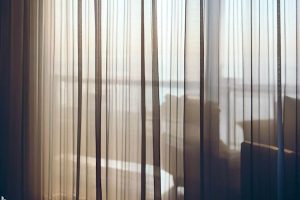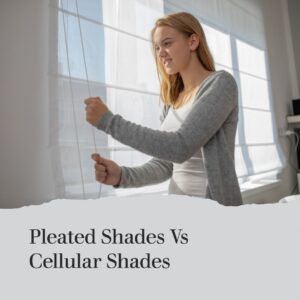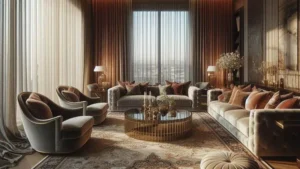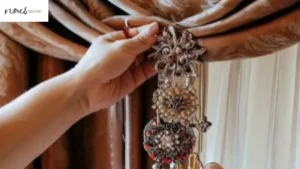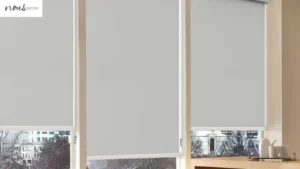Choosing between Cellular Shades Vs Faux Wood blinds can be a difficult decision. After all, both styles offer great benefits for your home.
In this article, we at Nousdecor will compare the materials used in each style of blinds as well as their features, light control capabilities, privacy level, insulation abilities, advantages and disadvantages, styling options, maintenance requirements, and how to choose the right blinds for your space.
This will help you determine which type of window covering is right for your needs.
Key Takeaways of Cellular Shades Vs Faux Wood
- Both cellular shades and faux wood blinds offer light control, privacy, and insulation abilities.
- Cellular shades offer a modern look, better UV and heat blocking, and easier installation, while faux wood blinds have a classic look, better durability, and better insulation from noise and temperature changes.
- Both cellular shades and faux wood blinds come in a range of colors, textures, and patterns, and can be customized with decorative tapes or trims.
- Cellular shades are generally more budget-friendly and easier to install, while faux wood blinds require professional installation and have higher labor costs.
Materials Used
Versatile window decor ideas such as cellular shades and faux wood blinds both come with a variety of materials, making it easier to find something that fits your individual style and budget.
Cellular shades are made from semi-opaque fabrics which allow light to filter through while maintaining privacy. Faux wood blinds are made from either PVC or composite materials for greater durability in areas with higher humidity such as bathrooms or kitchens.
Both materials come in a range of colors, textures, and patterns, so you can easily find the look that you want for your home.
When considering cellular shades vs faux wood blinds, it’s also important to consider the insulation benefits of each material type.
Cellular shades are great at blocking heat transfer since the unique honeycomb design traps air between the pleats; this helps keep rooms cool during summer months and warm during winter months. Faux wood is also an excellent choice for insulation due to its vinyl backing which helps create an effective barrier against energy loss.
No matter what type of material you choose for your window treatments, there are sure to be advantages when taking into consideration cost-effectiveness, ease of cleaning, and overall aesthetics.
Moving on from here we will take a closer look at the features and benefits that each bring to the table when it comes to practicality in everyday life.
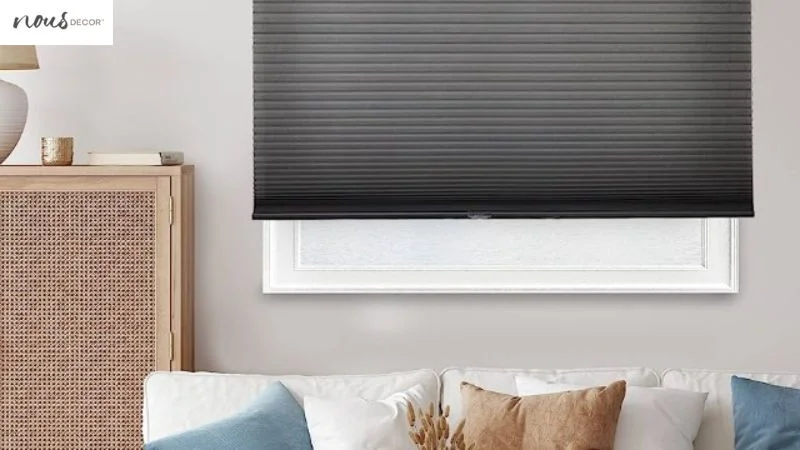
Features and Benefits
Discover the unique features and benefits of both creative window treatment designs, so you can decide which one is right for your home!
Cellular shades offer a modern look with contemporary appeal. They also provide excellent insulation, blocking up to 99% of ultraviolet (UV) rays from entering your home. Additionally, they are available in many colors and textures that will match any décor:
- Pleated cloth material
- Semi-opaque or blackout options
- Customizable fabric styles and colors
Faux wood blinds have a classic, traditional look that never goes out of style. They are extremely durable and easy to clean. Plus, they come in various slat sizes perfect for large windows or French doors. Some other features include:
- PVC materials for improved moisture resistance
- Ambiance-enhancing grain patterns
- Lightweight aluminum headrail system
Whether you’re looking for the timeless beauty of wood or the sleek sophistication of modern cellular shades, there is a variety of features to choose from that will suit your needs. This makes it easier than ever before to find the perfect window treatment for your home without sacrificing on quality or aesthetics.
With these considerations in mind, let’s take a closer look at how each type of shade provides light control.
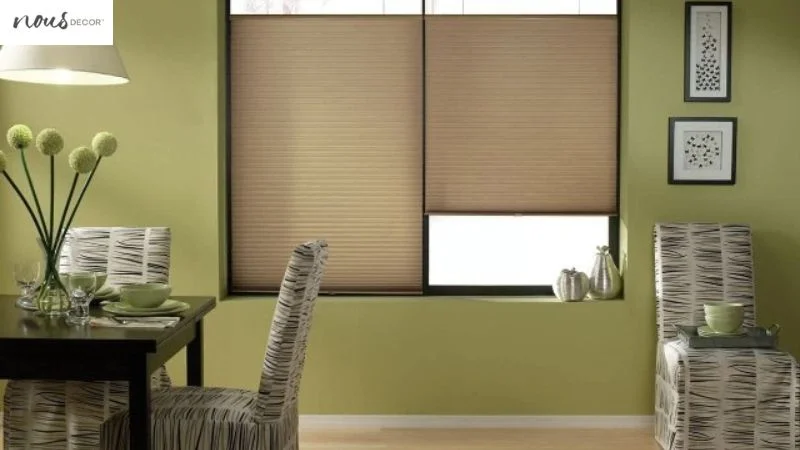
Light Control
You can enjoy unparalleled control over the amount of light entering your home with either of these must-have decorative accessories for windows. Cellular shades offer a range of opacity levels from sheer to blackout, making them ideal for bedrooms or other areas that require complete darkness.
The ability to tilt and angle the slats in faux wood blinds also allows you to adjust the level of sunlight streaming in, while maintaining an outside view. Both types come in various sizes and colors to match your decor.
When it comes to controlling light, there are benefits of cellular shades over faux wood blinds because they are better at blocking unwanted UV rays and heat gain from direct sunlight exposure.
This makes them energy-efficient options that can help reduce cooling costs throughout hot summer months. On the other hand, faux wood blinds do not provide as much insulation against UV rays, yet still allow you to customize how much natural light enters your home without compromising views from indoors.
Regardless of which type you choose, both cellular shades and faux wood blinds let you take control over how much light enters your living space – whether it’s allowing full sun or creating a dark atmosphere for sleep or movie nights.
With this versatility comes improved privacy since each product gives you a choice between completely closed-off windows or partially opened ones – perfect for those times when you want fresh air but don’t want prying eyes peeking inside. Moving on…
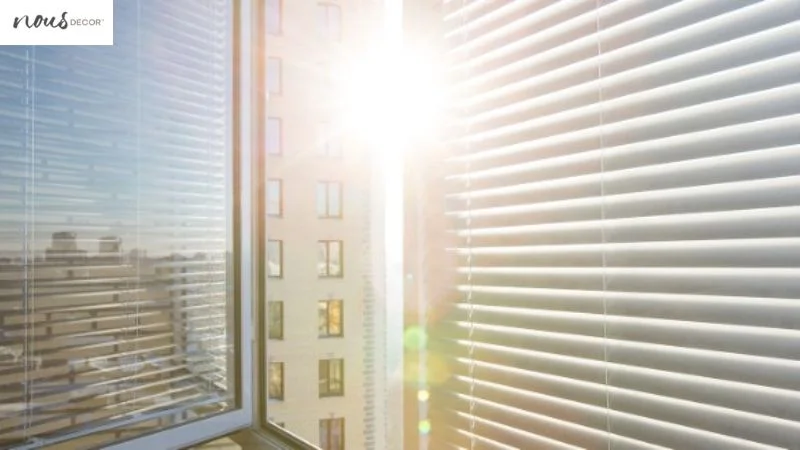
Privacy
You can enjoy a heightened level of privacy with either of these window treatments, allowing you to choose how much fresh air and natural light comes into your home without sacrificing safety.
Cellular shades provide more privacy than faux wood blinds by utilizing light-blocking fabric that is perfect for darkening bedrooms or bathrooms. The tightly woven material also prevents prying eyes from entering your home.
Faux wood blinds are still an effective way to increase privacy, but they do not block all incoming light like cellular shades do.
| Privacy Level | Cellular Shades | Faux Wood Blinds |
|---|---|---|
| High | ✔️ | ✖️ |
| Low Light Blocking | ✔️ | ✖️ |
Both options offer the ability to control the amount of fresh air and natural light while providing different levels of privacy depending on your preferences.
However, if you are looking for a greater degree of security and privacy, then cellular shades may be the better option due to their higher-quality materials and construction techniques. To ensure optimal insulation in any room, it’s important to consider investing in both window treatments as part of an overall design strategy.
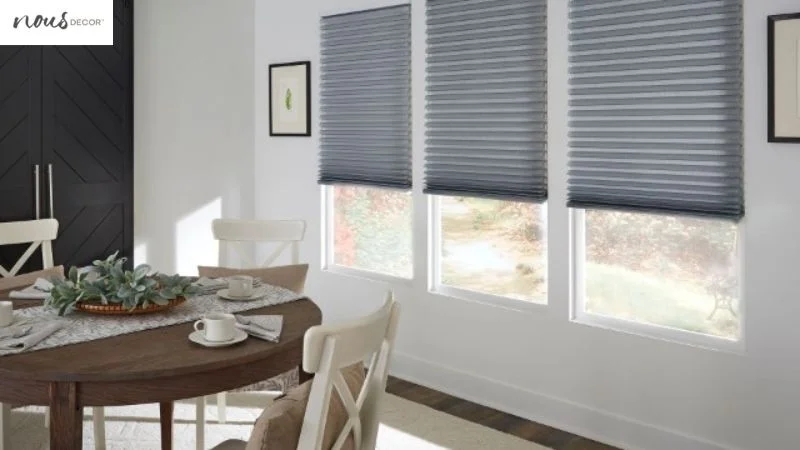
Insulation
By investing in both window treatments, you can effectively insulate your home to keep it comfortable year-round. When it comes to insulation, cellular shades offer superior insulation power due to their unique honeycomb design.
This layer of air trapped between each cell helps maintain a consistent temperature throughout the room and keeps out unpleasant drafts. On the other hand, faux wood blinds are made of a much thicker material that provides some insulation from heat and cold but not as much as cellular shades.
Here are three key takeaways when comparing these two window treatments:
- Cellular shades provide better insulation than faux wood blinds
- Faux wood blinds are thicker, offering some insulation but not as good as cellular shades
- Both window treatments help maintain a consistent temperature and keep out drafts
The next important factor when considering window treatments is durability – so let’s take a look at how these two stack up in this regard…
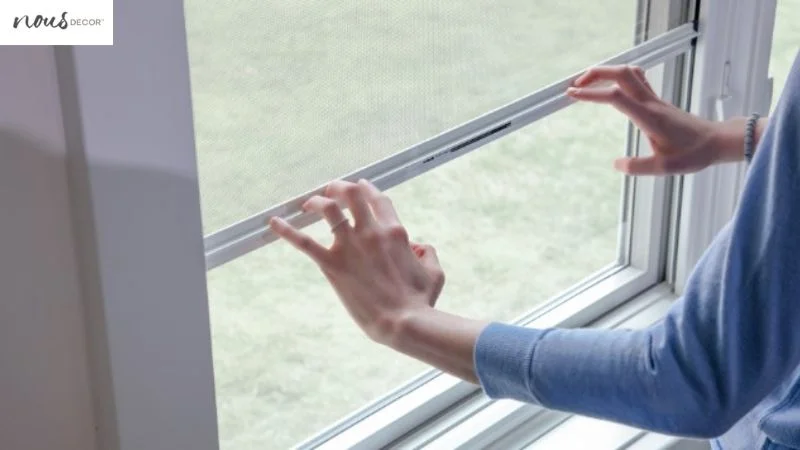
Durability
When it comes to longevity, cellular shades’ honeycomb design provides a sturdy layer that can hold up against wear and tear, while faux wood blinds are made of denser material that’s more resistant to damage.
As far as durability is concerned, cellular shades tend to last longer than faux wood blinds because they are not exposed to direct sunlight or moisture which can cause them to warp.
| Cellular Shades | Faux Wood Blinds |
|---|---|
| Long-lasting | Shorter life span |
| Not exposed to direct sunlight or moisture | Exposed to direct sunlight or moisture |
| Can withstand wear and tear | More susceptible to damage |
The main difference between the two lies in their composition—cellular shades are made of lightweight fabric whereas faux wood blinds are composed of a combination of vinyl, plastic, and/ or composite materials.
This makes cellular shades less prone to warping due to temperature changes and other environmental factors. On the other hand, faux wood blinds may become brittle with age if exposed too often under extreme temperatures or humidity levels.
When it comes down choosing between these two options for window treatments, both styles have their own set of advantages and disadvantages when considering durability.
Cellular shades provide a longer lifespan but require extra care in order for them not be subjected too much sun exposure while faux wood blinds tend be more susceptible damage but offer a greater degree protection from outside elements like rain and dust particles.
Moving on from this section about ‘durability’, let’s explore how cost of installation compares between these two window treatment styles.
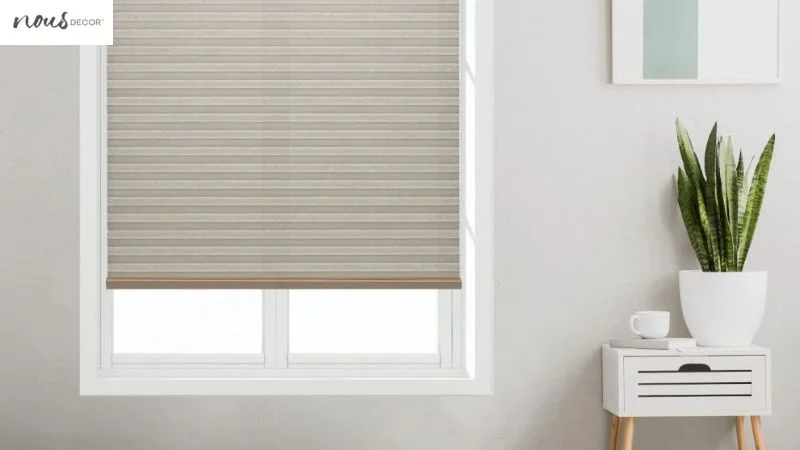
Cost of Installation
Comparing the cost of installation, it’s clear that one material choice may be more affordable than the other. When it comes to cellular shades vs faux wood, there are several considerations to make:
| Installation Fees | Materials Cost | Labor Costs | |
| Cellular Shades | Minimal effort, no additional fees | Budget-friendly | Lower labor costs |
| Faux Wood | Professional installation, extra costs | Higher cost | Higher labor costs |
When looking at points like these, it’s easy to see why some people might prefer one material over another depending on their unique situation and needs.
It’s important that homeowners carefully consider the cost of materials as well as any potential installation fees before making a decision about which window treatment is best for them.
Knowing all these details can help make sure you select an option that fits both your budget and design style!
Advantages and Disadvantages
Considering the advantages and disadvantages of each material can help you make an informed decision about which window treatment is best for your home. Cellular shades are a great choice if you’re looking for something that’s both energy efficient and affordable, as they tend to be less expensive than faux wood blinds.
Cellular shades come in a variety of colors and styles, allowing you to match them easily with your home décor.
However, they do not offer the same level of insulation from heat or sound that faux wood blinds do.
Faux wood blinds are more durable than cellular shades and also provide better insulation from noise and temperature changes. But while these blinds may look like real wood, they are made of composite materials that may not stand up to extended exposure to sunlight as well as genuine wood would.
When it comes to ease of installation, cellular shades tend to be easier since they don’t require any drilling or additional hardware installation for mounting purposes. On the other hand, faux wood blinds need extra screws for secure mounting and usually require drilling into the wall or window frame itself.
Another factor to consider is maintenance: both types of window treatments will require occasional dusting but faux wood blinds may need additional polishing at times due to their fragile nature.
No matter which type you choose, make sure it fits your needs in terms of style, energy efficiency, durability and cost before making a purchase so you can enjoy your new window treatment for many years ahead!
With all this information in mind, it’s time to move on and explore some styling options available with each material type.

Styling Options
You have a wide range of styling options available to you, depending on your preference and the look you’re trying to achieve.
Cellular shades come in many different colors and textures, such as light-filtering fabric or blackout options. Faux wood blinds come in a variety of natural-looking finishes, from white oak to cherrywood. Here are some advantages that each option provides:
- Cellular shades offer an impressive selection of fabrics and colors that can easily fit any decor style.
- Faux wood blinds require less maintenance than real wood and provide a warmer feel than metal blinds.
- Both materials can be customized with decorative tapes or trims for added flair.
- There is also the option for motorization if needed, making it easier to open and close them at desired times throughout the day.
- Each type of shade has its own unique design capabilities with choices like cordless lift systems, top down/bottom up operation, or even two-on-one headrail designs.
No matter which material you choose for your window treatments, both cellular shades and faux wood blinds provide great options that allow you to customize your home’s interior while creating energy efficiency benefits too.
With all these choices available, it’s easy to find something perfect for every space in your home! Maintenance is an important factor when choosing window treatments…
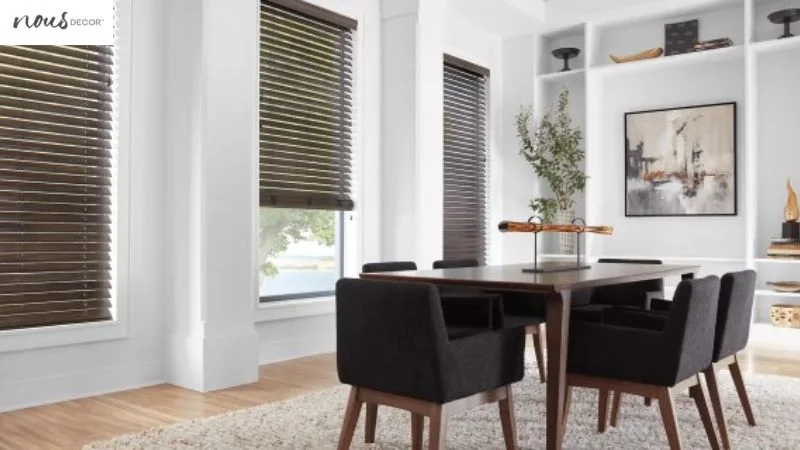
Maintenance
When it comes to styling options, there are many choices available between cellular shades and faux wood blinds. But when considering which option is best for you, maintenance tricks for window decor should also be taken into account.
Cellular shades are the easiest option out of the two when it comes to upkeep – they require virtually no cleaning other than a quick dusting every once in a while. Faux wood blinds need to be wiped down more often with a damp cloth as dust and dirt can accumulate quickly on their slats.
They can also be damaged if exposed to too much moisture and direct sunlight, so care must be taken not to get them wet or leave them open in excessive light.
Both cellular shades and faux wood blinds come with warranties that cover any potential damages, but it’s still important to take proper measures in ensuring that your window treatments last as long as possible.
Regularly inspecting the components of both types of window treatments helps ensure that everything is working properly before any damage occurs, allowing you to catch repair issues early on.
In terms of overall maintenance, cellular shades may have the edge over faux wood since they require less attention from you – though both are relatively easy if properly cared for. It really comes down to personal preference when deciding which type of window treatment will work best for you- how much effort do you want to put into maintaining your blinds?
With this in mind, let’s move on and discuss how choosing the right kind of blinds can help make sure your home looks its best.
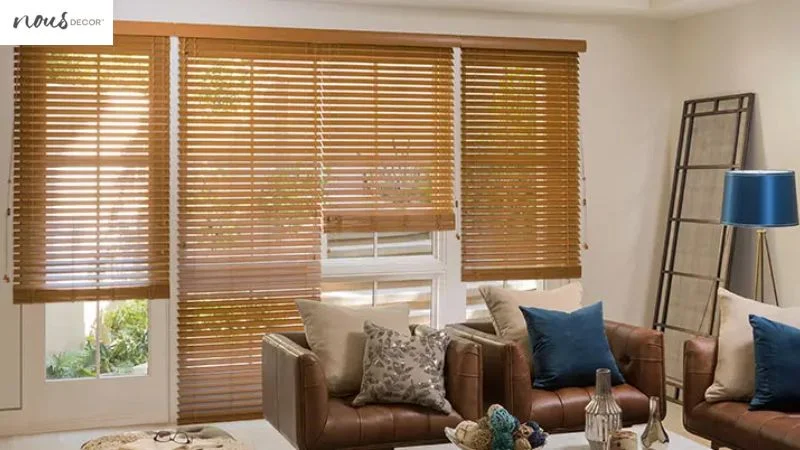
Choosing the Right Blinds
With the right window treatments, you can instantly transform any room in your home into a stylish space. When it comes to determining appropriate window shades between cellular shades and faux wood blinds, you’ll want to consider your personal preference as well as the specifics of your room.
Cellular shades are ideal for insulation and blocking out sunlight, while faux wood blinds offer more of an aesthetic appeal. If you’re looking for something that can do both, you might opt for a combination of both types of window treatments.
Cellular shades come in a variety of textures and colors that are sure to match any decor style. They also allow plenty of natural light into the room while protecting from UV rays at the same time.
Faux wood blinds may be more expensive but they have a unique look and feel that can add character to any room. They are also easier to clean than traditional wooden blinds because they don’t require polishing or sanding like real wood does.
When it comes down to it, both cellular shades and faux wood blinds have their advantages and disadvantages so make sure you take all factors into consideration before making your final decision.
Whether you choose one type or mix them together, with the right window treatments you can create an inviting atmosphere with little effort!
Frequently Asked Questions
Conclusion
When it comes to choosing between Cellular Shades Vs Faux Wood blinds, there’s no one-size-fits-all answer. Each has its own advantages and disadvantages that must be weighed carefully.
Cellular shades offer superior insulation and light control, but their styling options are limited. Faux wood blinds look more attractive but may require more maintenance over time.
Ultimately, the best choice depends on individual needs and preferences. No matter what you choose, make sure it offers the features and benefits that will work best for your home or office space.
Also, if you’re interested in more cellular shade comparisons, check out our article on the pros and cons of shades vs curtains now!

